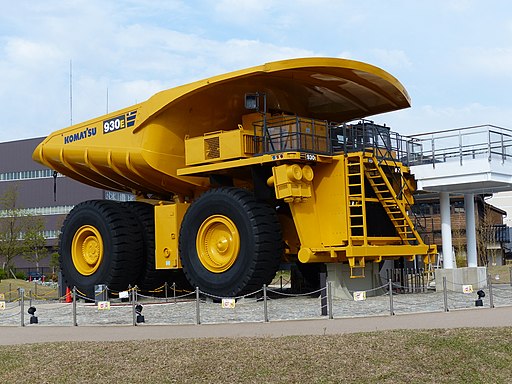fool.com
Driving costs down and efficiency up with technology & automation. Source: Rio Tinto presentation
Giant miner Rio Tinto plc (ADR) isn't a company you'd normally associate with computers. But it's working hard to connect its mining machines to computers so it can take a leading position in, and benefit early from, the Internet of Things revolution. Here are some of the key milestones it's reached.
The Mine of the FutureIn 2008, Rio Tinto started working on a project it called, and trademarked, "The Mine of the Future." While that's a pretty audacious title, what the giant global miner is working on is pretty close to a paradigm shift in an industry that basically digs things out of the ground.

Source: Gamera866, via Wikimedia Commons.
For example, Rio has one of the largest fleets of autonomous hauling trucks. Yes -- that means trucks that don't have a driver sitting behind the wheel.
In mid-2014, Andrew Harding, the company's chief executive of Iron Ore, China, Korea and Japan, explained it thusly: "These new technologies bring value and productivity benefits through decreased variability, improved schedule efficiency and early identification of bottlenecks in the system. The autonomous truck fleet also delivers significant savings in maintenance, [tire] life and fuel."
But how do you actually make a truck work without a human being sitting behind the wheel? The answer is by using computer technology that allows the truck to use radar, talk to global positioning systems, check in with other trucks in the area, and communicate with human beings in a remote location. In other words, the Internet of Things meets digging iron ore out of the ground, and the marriage is working wonderfully. How wonderfully? According to the company, autonomous trucks in its Hope Downs 4 mine have 14% higher utilization than similar mines it runs and cost 13% less to operate. Do more, pay less... not bad.
Bigger machinesTrucks, however, aren't the only thing Rio is rigging with high tech gear. Late last year, it ran its first driverless train, and it has worked with autonomous drilling systems since 2014, too. The entire Mine of the Future concept hinges on the ability to take mundane devices (trucks, trains, and drills) and add modern connectivity technology.
That said, there are high-tech systems (like radar) on board these self-actuated machines to ensure safety. But giving these often giant machines the ability to talk to each other and to Rio Tinto is the bigger piece of the solution. For example, Rio Tinto's operations center in Perth, Australia, oversees all of its mines in the region. And earlier this year, Rio announced it was starting to use so-called "big data" to examine the information it's collected from its connected machines. The idea is to find even more ways to increase productivity and reduce costs.
Analyzing millions of data points is amazing in its own right, but the real key here is the fact that Rio has been able to capture all of that data because of its investment to connect its machines. Even more exciting, however, is the fact that once a potential improvement area has been identified, the miner can quickly push changes out to its computer-controlled fleet of trucks, trains, and drills from its main command center.
That should materially reduce the time from the conception of an idea to its implementation. The benefit of which is hard to quantify here because it will take place behind the scenes. But the end result will be a far more nimble Rio Tinto.
Iron Ore Spot Price (Any Origin) data by YCharts.
To The Mine of the Future... and beyond!It's a tough time to be a miner right now because commodity prices are so weak, and investors are -- rightly so -- focused on those commodity prices. But don't let that overshadow the fact that the Internet of Things is quickly invading the sector -- and having a massive impact. Rio Tinto is really just one example.
But the impact for Rio could be huge. For example, Rio's operating costs were roughly $34 billion last year. There's a lot that goes into that number, but running its mining operations is clearly the biggest input. If Rio can use the Internet of things and its Mine of the Future initiative to move costs lower throughout the business, by say 6.5% (that's cutting the 13% cost savings seen in the Hope Downs 4 mine in half), it could trim costs by more than $2.2 billion. In 2014 that would have been worth a roughly 20% boost to what Rio actually made last year, by my back-of-the-napkin calculations.
The Shale Revolution Is Nothing Compared to ThisThe Shale Oil Revolution made America the largest energy producer in the world. But this coming technological revolution will put it to shame. The Economist is calling it "transformative"... But you'll probably just call it "how I made my millions." Just like the shale revolution, the lucky few to get in on the ground floor of this tectonic shift in the way our world works stand to walk away with a fortune.
No comments:
Post a Comment